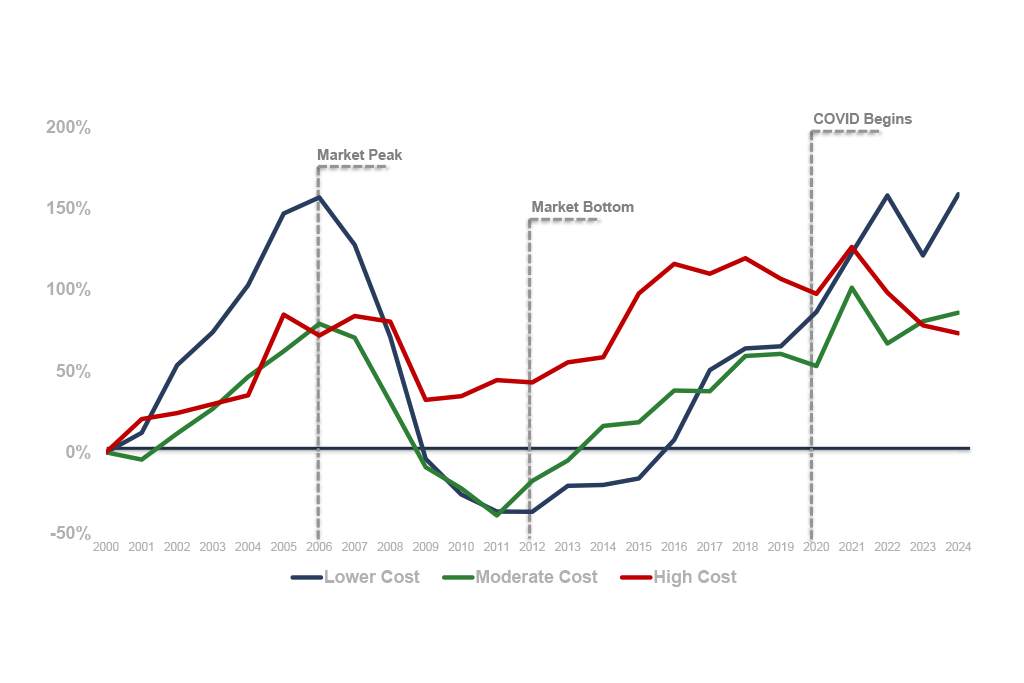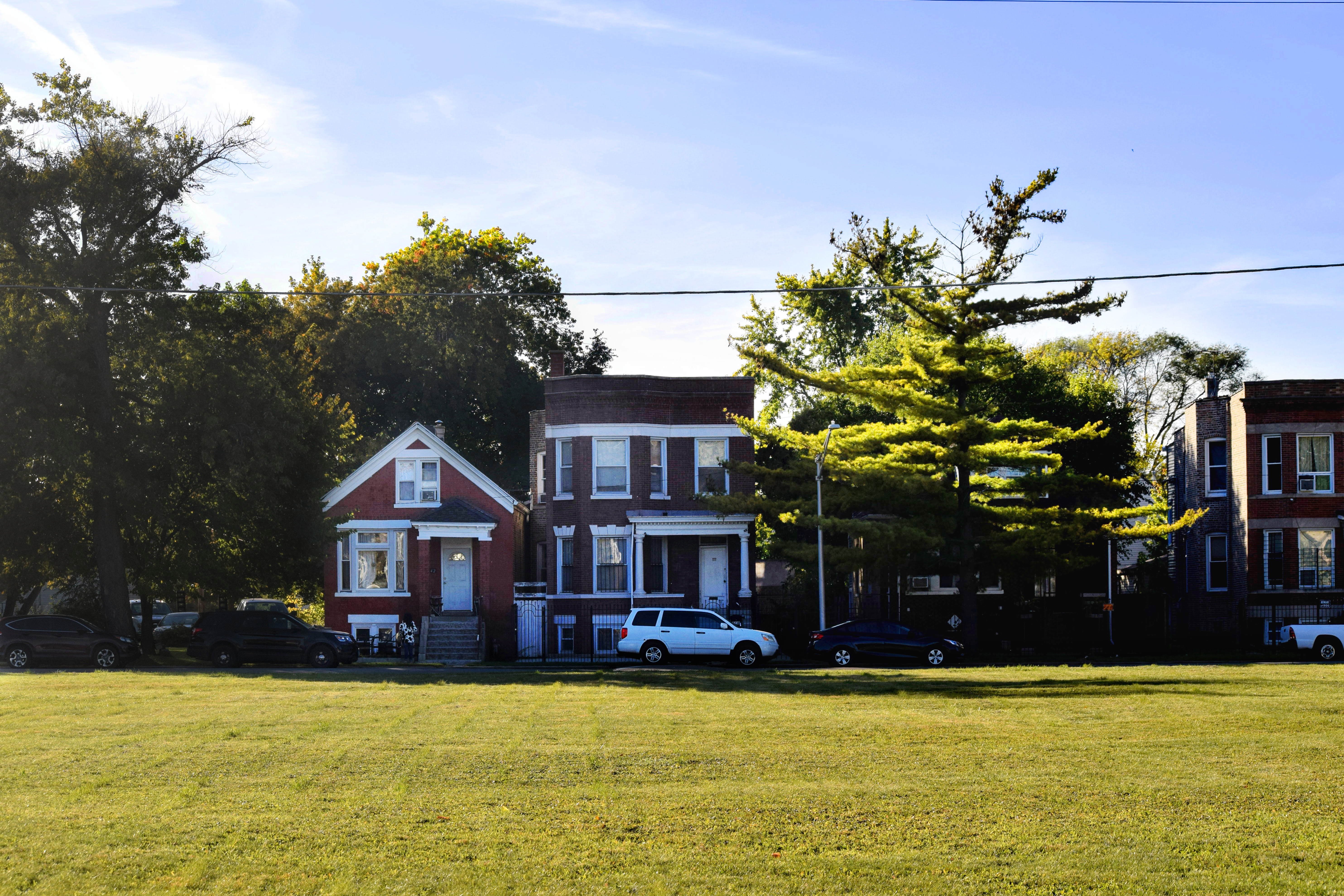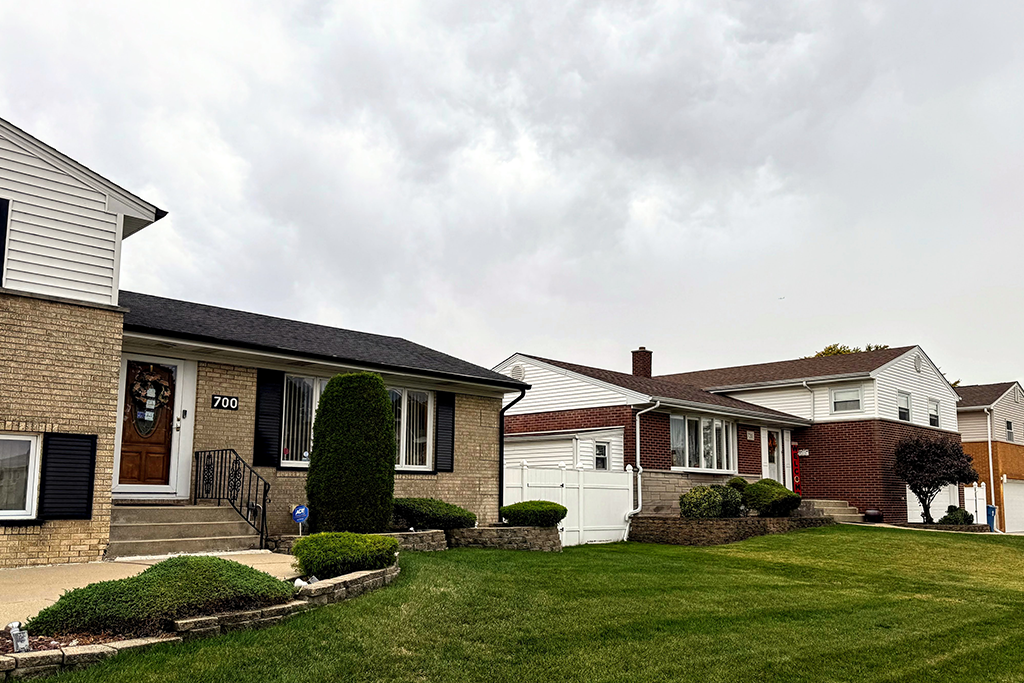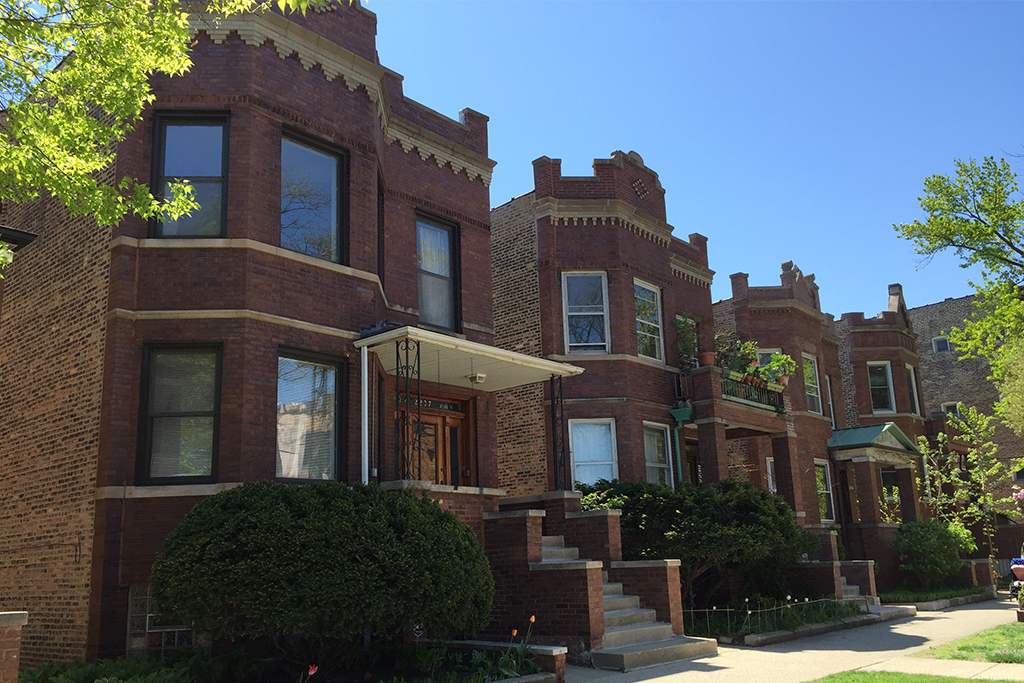Photo: Evelyn Ryan
One of the key conclusions of our latest report, Recent Homebuying Patterns for 2 to 4 Unit Properties was the importance of 2 to 4 unit buildings for Black and Latino homebuyers. The study found that Black and Latino homebuyers were more likely to purchase 2 to 4 unit properties compared to other borrowers and that there was strong demand for owner-occupied 2 to 4s in neighborhoods on the South and West Sides of the city. However, in recent years, the supply of 2 to 4s in many Chicago neighborhoods has shrunk, highlighting an urgent need to preserve and expand their number.
This blog reviews several programs in Chicago that showcase efforts to create a supply of affordable, for-sale housing in neighborhoods that have struggled for decades with disinvestment-related challenges. While these programs are not exclusively focused on 2 to 4s, they can be leveraged to preserve existing 2 to 4s, rehab vacant ones, or build new affordable buildings to broaden housing options for future homebuyers.
2 to 4's are a critical housing stock for Black and Latino homebuyers but the stock is at risk
For many Black and Latino homebuyers, 2 to 4 unit buildings provide an important pathway to homeownership. In Chicago, these properties are common in many majority Latino and predominantly Black neighborhoods. Moderate or middle-income homebuyers can use additional units in 2 to 4s to build wealth and defray the associated housing costs by generating rental income. In addition to providing affordable units to tenants, homeowners can use the properties for multigenerational housing. Finally, the units in 2 to 4s also tend to have a larger number of bedrooms than other types of multi-unit housing, meaning that they are a reliable source of “family-sized” housing.
Despite their status as a critical housing option in many neighborhoods, Chicago has been losing 2 to 4 unit buildings in recent years. The reasons are manifold and complex, and they vary depending on the neighborhood market context. In many North and Northwest side neighborhoods, 2 to 4s are rapidly being replaced by expensive single-family homes. Additionally, in higher-cost areas, newly constructed 2 to 4s are typically condos and unlikely to be affordable. In lower-cost communities on the South and West sides, 2 to 4s have been lost to disinvestment and demolition and converted to non-residential land use, which is typically vacant land. Due to broader disinvestment-related challenges, vacant land where a 2 to 4 once stood often remains undeveloped.
Programs focused on expanding affordable housing opportunities in South and West side neighborhoods
Despite the general loss of 2 to 4s, our recent report found indications of demand for owner-occupied 2 to 4s in majority Latino and predominantly Black communities. The map below illustrates that there are substantial concentrations of Black and Latino 2 to 4 home purchase lending in many South and West Side neighborhoods. These neighborhoods include South Shore, Woodlawn, Auburn Gresham, Grand Boulevard, and Chatham. Further, these neighborhoods also showed stronger levels of investment from 2 to 4 owner-occupants than might be expected when compared to the broader distribution of these properties across the city. As shown in the chart below, these neighborhoods account for a higher share of Chicago’s owner-occupied 2 to 4 home purchase loans when compared to the distribution of the 2 to 4 housing stock citywide.
Figure 1. Randomized Dot Density of Owner-Occupied Home Purchase Loans on 2 to 4 unit Properties in the City of Chicago, 2018 to 2021
Figure 2. Top 10 City of Chicago Community Areas with the Largest Gap in Citywide Share of Total 2 to 4 Parcels and Citywide Share of Total Owner-Occupied Loans on 2 to 4 Unit Properties, 2018 to 2021
These data indicate a healthy demand for 2 to 4 unit properties from Black and Latino homebuyers and neighborhoods. They also highlight the need and opportunity to prioritize programs that support the rehabilitation, preservation, and new construction of affordable 2 to 4s. The programs below are examples of recent initiatives that can help with this goal. Though these program initiatives are not strictly limited to 2 to 4s, they are all focused on expanding or preserving the affordable housing stock for potential homebuyers in South and West Side neighborhoods.
- Come Home Initiative: This program, a collaboration between the City of Chicago and the Chicago Architecture Center, is a design competition seeking to support missing middle-density infill housing in South and West Side neighborhoods. Architects are tasked with reimagining different types of residential properties, including 2-3 flats, for today’s needs. The program is committed to delivering 30-100 housing units, which will be built on vacant lots selected for redevelopment.
- The Reclaiming Communities Campaign: This initiative by the Lawndale Christian Development Corporation, in partnership with Chicago Neighborhood Initiatives and United Power for Action and Justice, intends to transform vacant lots in North Lawndale into affordable, quality homes for lower-income families. The campaign has received significant support from the city government: the mayor’s office has announced that the City of Chicago is going to sell 250 of their own lots to the coalition for only $1 to help the campaign’s efforts.
- Connecting Capital and Community (3C): Part of a national initiative to increase equitable housing opportunities, this three-year program seeks to develop and test innovative housing solutions that can later be replicated throughout different neighborhoods. In Chicago, the initiative is being led by Chicago Community Trust. East Garfield Park and Humboldt Park have been chosen as the “test” neighborhoods. The strategies being put in place incorporate the perspectives of a vast network of stakeholders, which include residents, community organizations, and partners in both the public and private sectors. The initiative has multiple strategies including collaborating with the Cook County Land Bank to use vacant land for the development of affordable homes and building the capacity of Chicago's Black and Latino real estate developers.
- The Tax Increment Finance Purchase Rehab (TIFPR) Program: This initiative by the City of Chicago is intended to assist homebuyers who want to purchase or rehab 1 to 4-unit residential properties and then live in them long-term. The properties must be in certain active Tax Increment Finance districts (which include parts of North Lawndale, East Garfield Park, West Humboldt Park, Englewood, Auburn Gresham, Chatham, Grand Crossing, Roseland, West Pullman, and Morgan Park), and the applicants must be willing to live 5-10 years on the property, depending on the amount of assistance they receive. Accepted applications can use TIF funding as a forgivable loan to complete such projects.
IHS’ work on 2 to 4 unit buildings is ongoing. IHS is part of the Chicago Flats Initiative, a coalition of organizations that work to preserve 2 to 4 unit buildings. To be informed on our latest research on these units, as well as other important topics in Chicago-area housing, sign up for our newsletter, or follow us on Twitter and LinkedIn.






